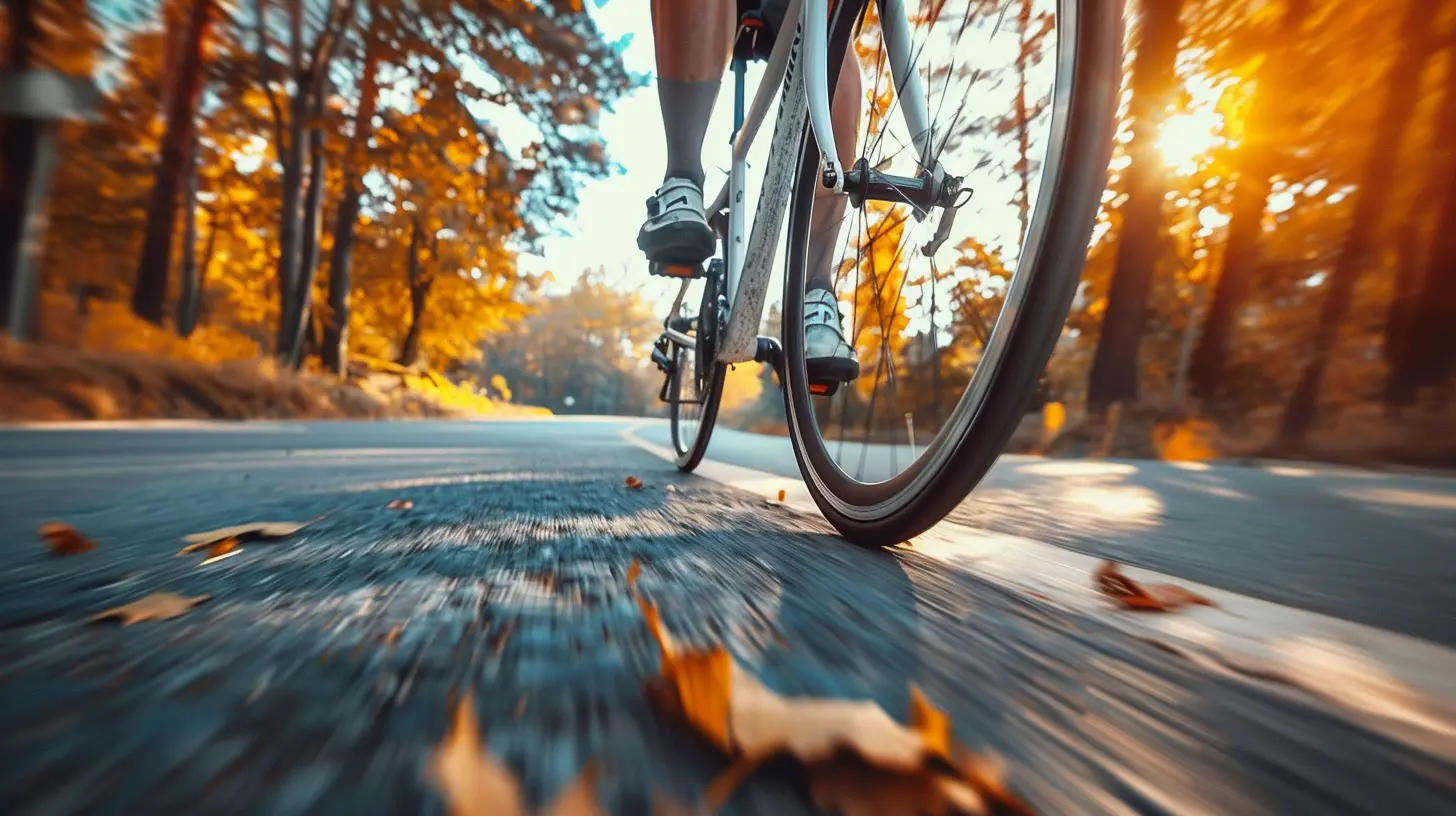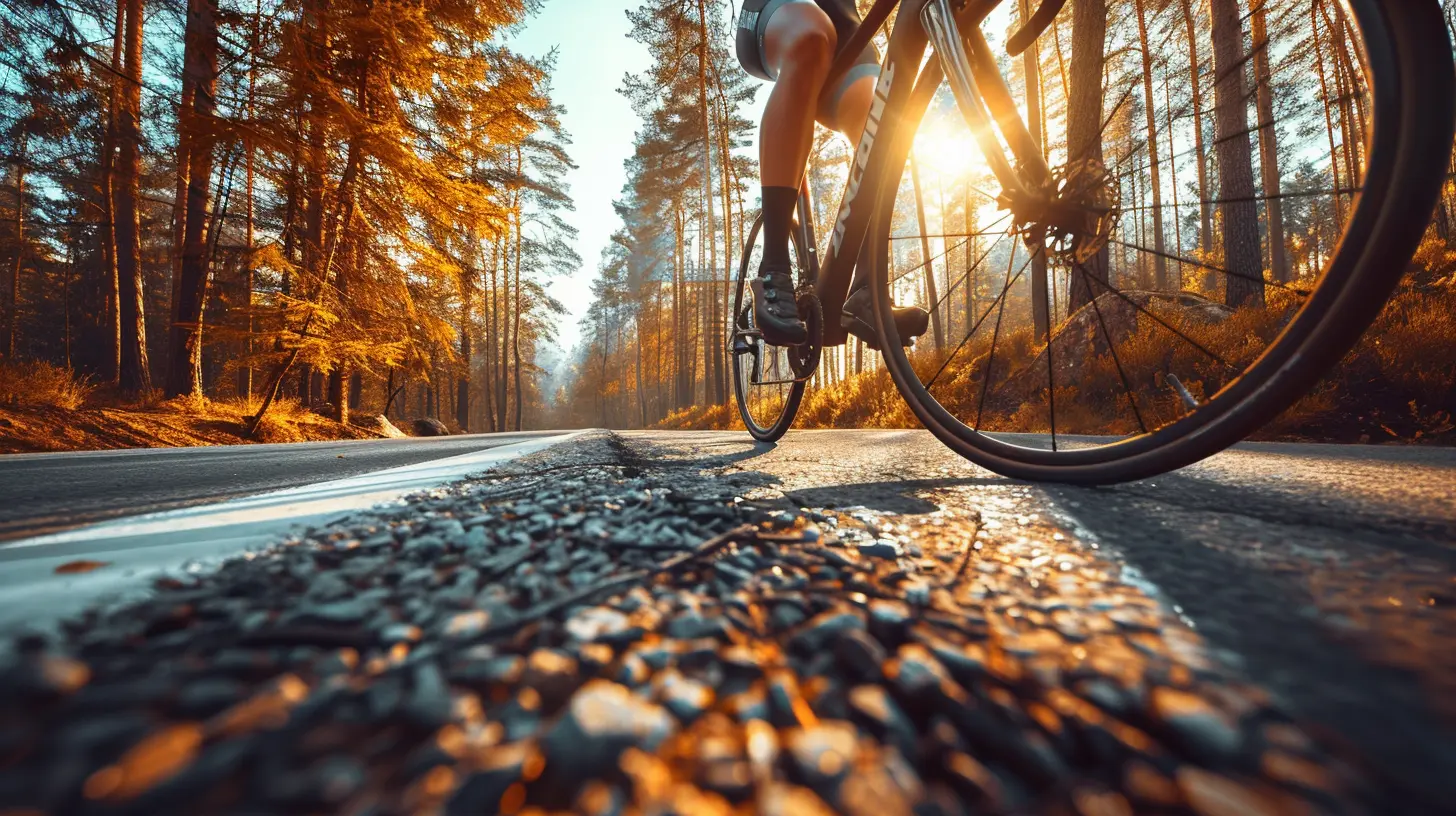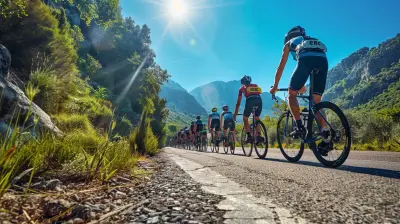How to Improve Your Sprinting Power on the Bike
26 September 2025
If you’ve ever watched pro cyclists launch into an explosive sprint finish, you know just how much raw power is required. Sprinting isn't just about pedaling faster—it's about maximizing your strength, speed, and technique to unleash every ounce of energy when it matters most.
So, how do you improve your sprinting power on the bike? Whether you're a racer looking for that extra edge or just want to crush your weekend group ride, this guide will break down everything you need to know. Let’s dive in!

Why Sprinting Power Matters
Sprinting is the ultimate cycling test of speed and strength. Whether you're gunning for the finish line, breaking away from the pack, or just trying to beat your buddy to the town sign, a strong sprint can make all the difference.Better sprinting power means:
✅ Increased acceleration – Quickly respond to attacks or surges.
✅ Higher top speed – Outpower competitors in a final sprint.
✅ More explosive bursts – Perfect for criteriums, road races, and track cycling.
✅ Better anaerobic capacity – Handle short, intense efforts without fading.
Now, let’s talk about how to actually build that power.

Strength Training for Cycling Sprints
Raw power comes from strong muscles, and no, just riding your bike isn't enough. You need to hit the gym and focus on exercises that develop leg strength and explosive force.
Key Strength Exercises for Sprinting Power:
1. Squats – The king of lower-body exercises. Back squats and front squats build your quads, hamstrings, and glutes—the main muscles used in sprinting.2. Deadlifts – Strengthens your posterior chain (glutes, hamstrings, and lower back), crucial for producing power.
3. Leg Press – Helps develop leg strength with a high load while maintaining proper form.
4. Lunges – Builds unilateral strength and improves balance, mimicking the pedaling motion.
5. Box Jumps – Enhances explosiveness by training fast-twitch muscle fibers.
6. Kettlebell Swings – Develops hip power and endurance, essential for rapid acceleration.
How to Incorporate Strength Training
- 2-3 sessions per week during the off-season or base phase.- Lower reps, heavier weight (e.g., 4-6 reps, 3-5 sets) to maximize strength gains.
- Explosive movements like box jumps or kettlebell swings for power development.
Strength training isn’t just about lifting heavy—it’s about becoming a more powerful rider overall. Now, let’s look at on-the-bike sprint drills.

Sprint-Specific Training on the Bike
Lifting weights builds your strength, but actual sprinting drills on the bike translate that strength into speed.Best Sprint Workouts for Cyclists
1. Standing Starts
- Find a flat road or slight incline.- Shift to a big gear (53x15 or similar).
- Start from a dead stop and sprint all-out for 8-12 seconds.
- Focus on explosive power and keep your upper body stable.
- Recover for 3-5 minutes and repeat for 6-8 reps.
2. High-Cadence Sprints
- Spin up to 120-140 RPM in a low gear.- Hold this high cadence for 15-20 seconds.
- Rest for 2 minutes, then repeat 8-10 times.
- Builds neuromuscular coordination and leg speed.
3. Seated Sprints
- Sprint at 100% effort while remaining seated for 10-15 seconds.- Focus on smooth, powerful pedal strokes.
- Perform 6-8 reps with full recovery.
4. Rolling Sprints
- Ride at moderate speed (~20 mph).- When ready, explode into a sprint for 10-12 seconds.
- Keep the upper body controlled and shift as needed.
- Rest for 3-5 minutes, then repeat 6-8 times.
5. Hill Sprints
- Sprint uphill for 8-12 seconds at full effort.- Builds leg strength and explosive power.
- Rest for 3-5 minutes between reps, repeat 6-8 times.
Sprint training should be intense but short—quality over quantity. Too many sprints can lead to burnout, so aim for no more than two sprint-focused rides per week.

Bike Setup and Technique for Maximum Power
Having the right technique and equipment can make or break your sprinting performance.Dial in Your Bike Fit
A proper bike fit ensures you can push max power efficiently. Key areas to check:🔹 Saddle Height & Position – Too high or too low can limit power output.
🔹 Handlebar Reach – You should feel stable and controlled in a sprint position.
🔹 Cleat Position – Adjust for an optimal foot-pedal connection.
A professional bike fitting can make a huge difference in your sprinting efficiency.
Master Your Sprint Form
When it’s time to launch your sprint, technique matters. Here’s how to get it right:1. Get Low & Aero – Bend your elbows, lower your torso, and reduce wind resistance.
2. Grip Firmly – Always sprint in the drops for better control and stability.
3. Body Still, Legs Fast – Avoid unnecessary upper-body movement—wasted energy!
4. Start in the Right Gear – Not too hard (slow acceleration), but not too easy (spinning out).
5. Pull & Push the Pedals – Maximize power by engaging both the downstroke and upstroke.
Powerful sprinting isn’t just about brute force—it’s a mix of strength, speed, and smooth technique.
Nutrition for Explosive Sprinting
Sprinting burns through glycogen fast, so fueling your body properly is crucial.Pre-Ride Nutrition
- Eat a balanced meal with carbs, protein, and healthy fats 2-3 hours before training.- A small carb-rich snack (like a banana or energy bar) 30-60 minutes before sprinting helps top off energy stores.
During the Ride
- Hydrate! Dehydration can reduce power output.- Carbs = Fuel – If your ride lasts over an hour, aim for 30-60g of carbs per hour.
Post-Ride Recovery
- Sprinting depletes glycogen and breaks down muscle. Refuel within 30-60 minutes with:- Protein (20-30g) – Helps muscle recovery.
- Carbs (50-100g) – Restores energy levels.
- Electrolytes – Replaces lost minerals.
Eating well = stronger sprints!
Rest and Recovery: The Secret Weapon
Sprint training is demanding, and without enough recovery, your gains will stall.Prioritize Rest
- Hard sprint sessions? Take at least 48 hours before another high-intensity effort.- Sleep at least 7-9 hours per night to support muscle repair.
- Active recovery (easy rides, stretching, foam rolling) helps prevent stiffness.
Overtraining leads to fatigue—and a tired cyclist can't sprint at their best.
Final Thoughts
Improving your sprinting power isn’t just about pedaling harder—it’s a combination of strength, technique, training, and recovery.🔹 Hit the gym to build leg strength.
🔹 Train sprints on the bike with focused workouts.
🔹 Refine your sprint technique for maximum power.
🔹 Fuel your body with proper nutrition.
🔹 Recover well to maintain peak performance.
With consistent training and smart strategies, you’ll be dropping the hammer and leaving your competition in the dust. Now, go out there and sprint like a pro!
all images in this post were generated using AI tools
Category:
CyclingAuthor:

Frankie Bailey
Discussion
rate this article
1 comments
Rosanna Cross
Pedals dance beneath you, unleash strength, embrace speed—feel the wind.
October 14, 2025 at 12:04 PM

Frankie Bailey
Thank you! Embracing your pedal power and harnessing speed is key to improving sprinting performance. Keep pushing those limits!


